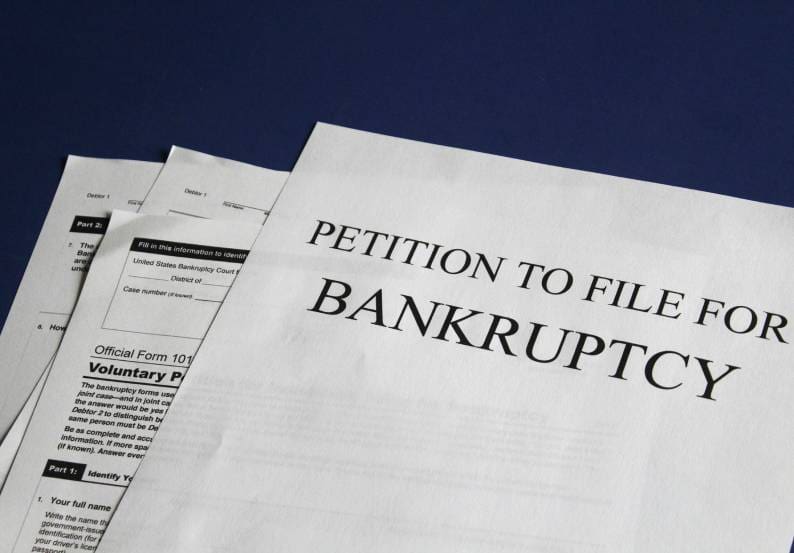words Al Woods
Filing for bankruptcy can be a complex and emotionally taxing process. It’s a course of action that signifies more than a financial crisis – it’s a restructuring of one’s economic life. Understanding the intricacies of the bankruptcy procedure is crucial for anyone standing on this daunting precipice. This guide aims to shed light on the path through bankruptcy, providing clear steps and offering solace in structured advice for individuals facing this difficult decision.
1. Consult With a Bankruptcy Trustee
The journey through bankruptcy requires guidance, and this is where consulting with a professional becomes an essential first step. A bankruptcy trustee at Fox Miles Associates, for example, is well-versed in bankruptcy’s legal and financial aspects and can offer expert advice tailored to your unique situation. They assess your financial standings, explain the differences between Chapter 7 and Chapter 13 bankruptcy, and assist in determining the most favorable course of action.
The trustees guide you through the intricacies and help prepare the necessary documentation required to file the petition. The firm’s commitment to clarity ensures that clients understand the consequences, processes, and timelines involved. Moreover, involving a trustee early on can provide emotional relief, knowing there is support throughout the complex navigation.
2. Understand Your Options
Understanding your options is a crucial second step in the bankruptcy journey. Begin with distinguishing between the types of bankruptcy available, such as Chapter 7, which involves liquidating assets, and Chapter 13, which allows for repayment plans. Exploring alternative debt relief strategies like consolidation, negotiation with creditors, or credit counseling services is pivotal before deciding.
Certain assets and retirement accounts may be protected during bankruptcy. Understanding these exemptions can impact the choice of bankruptcy chapter. Consulting with an attorney or financial advisor can help analyze liabilities and assets to determine the most beneficial chapter based on your circumstances. Prioritizing this evaluation provides clarity and strategic positioning for informed decisions about your financial future.
3. Complete Mandatory Credit Counseling
Individuals filing for bankruptcy must fulfill mandatory credit counseling sessions before the process can begin. These sessions aim to educate individuals on developing a budget, managing finances, and exploring debt relief options. They also serve as an opportunity to determine if there are any viable alternatives to bankruptcy.
Credit counseling courses can be completed online or over the phone with approved agencies. Once completed, a certificate of completion is issued, which must be included as part of the bankruptcy petition. This requirement ensures that individuals understand the gravity of their situation and are fully prepared to proceed with the bankruptcy process.
4. File the Bankruptcy Petition
Filing the bankruptcy petition is a significant move that sets your bankruptcy process in motion. This formal document, submitted to the bankruptcy court, outlines all your debts, assets, income, and expenses. It is crucial to be meticulous and truthful when listing all financial information, as any inaccuracies can lead to penalties or the dismissal of your case.
The moment the petition is filed, an automatic stay is immediately enacted, halting creditors from making further collection attempts. You must also pay a filing fee unless you qualify and apply for a waiver, demonstrating financial hardship. Once filed, the court will assign a trustee to oversee your case and schedule a meeting of creditors, often called a 341 meeting.
5. Attend a Meeting of Creditors
The 341 meeting, also known as the first meeting of creditors, is a crucial step in the bankruptcy process. This hearing takes place approximately four to six weeks after filing and involves the trustee, debtor(s), and any creditors who choose to attend. It is an opportunity for the trustee to verify information in the petition and ask questions regarding your financial situation.
Creditors may also ask questions about their debts during the meeting, but they rarely attend. Most creditors submit their claims and negotiate with the trustee separately. The 341 meeting serves as a chance to clarify any discrepancies in your petition and demonstrate good faith in the bankruptcy process.
6. Follow Through on Your Obligations
After completing the 341 meeting, there are still essential obligations that you must fulfill to receive a discharge of your debts. These include attending a court-mandated financial management course and providing any additional documentation required by the trustee or court. Failure to comply with these requirements can lead to case dismissal or denial of discharge.
Following through on any agreed-upon repayment plans or procedures outlined in your bankruptcy case is crucial. This could include making scheduled payments, adhering to asset liquidation processes, and attending court hearings as required. By fulfilling these obligations, you demonstrate good faith and increase the chances of a successful discharge.
The bankruptcy process can lead to relief and new beginnings despite its complexity. It requires diligence, transparency, and adherence to legal procedures. Remember, this guide is a simplified roadmap; professional legal advice is invaluable. Individuals facing bankruptcy can take solace in knowing there are clear steps to navigate the system and resources to aid in the journey. Each step offers a beacon of structure during a tumultuous time.











